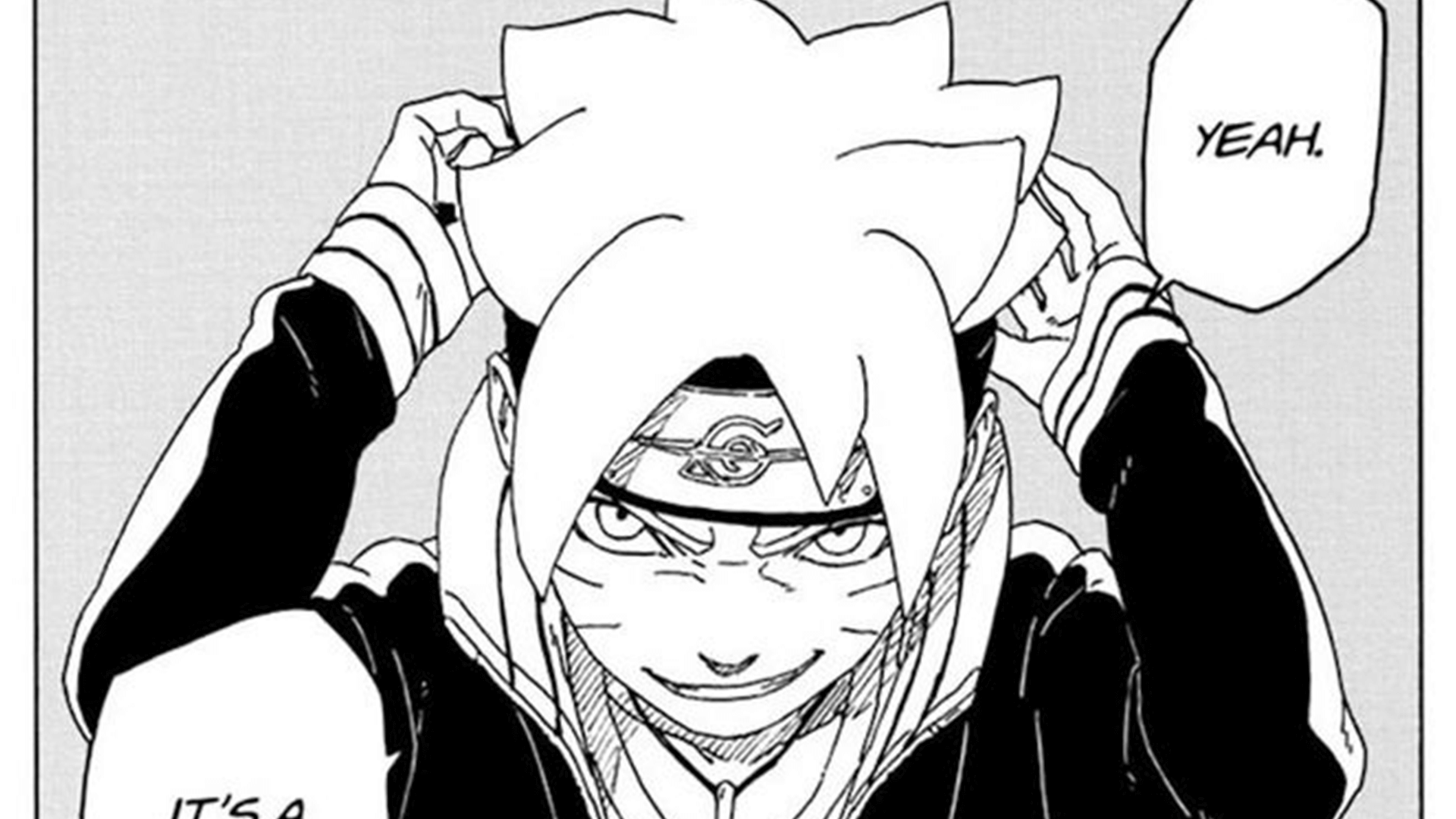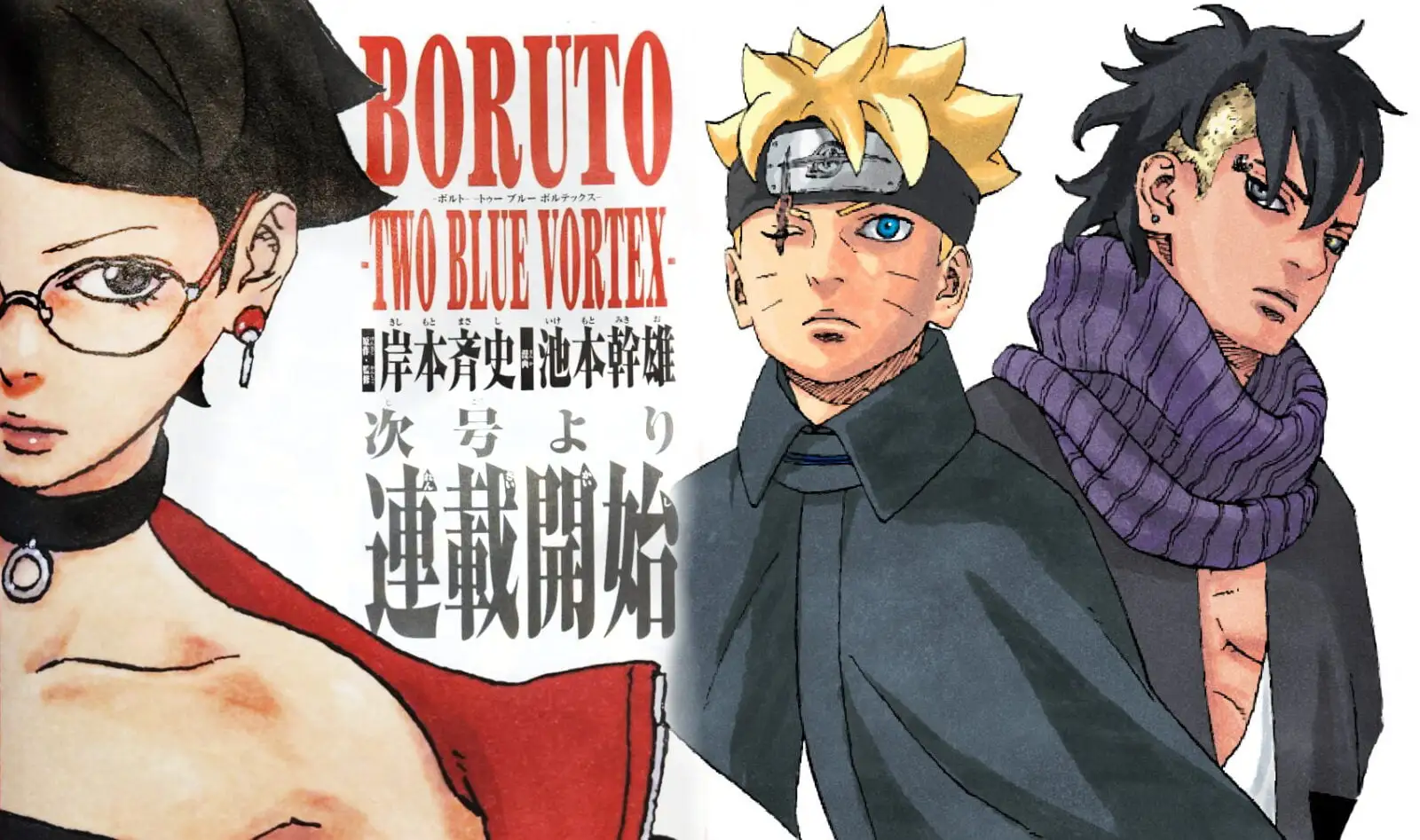Boruto manga, yo! It’s the next gen Naruto story, but is it as epic? We’re diving deep into the plot twists, character growth (or lack thereof), and those crazy new jutsu. Get ready to spill the tea on Boruto’s journey, from his rocky relationship with his dad to facing down some seriously wicked villains. This ain’t your grandpappy’s Naruto – this is next-level ninja action.
We’ll break down the major arcs, compare Boruto and Naruto’s development, and explore the motivations of the baddies. Think killer jutsu comparisons, deep dives into the power system, and an analysis of the art style – all the stuff you wanna know about the manga. We’re dissecting the themes, the narrative choices, and even the fan reactions. Prepare for a total manga breakdown, fam.
Boruto Manga: A Deep Dive
Yo, what’s up, manga heads? Let’s dive into the wild world of Boruto, the sequel to the legendary Naruto. This ain’t your grandpappy’s ninja story; it’s got twists, turns, and enough power-ups to make your head spin. We’re breaking down the plot, characters, jutsu, themes, art, and reception – the whole shebang. Get ready to level up your Boruto knowledge!
Major Plot Arcs and Narrative Impact
The Boruto manga has delivered some seriously epic plot arcs. The Chunin Exams arc, for example, set the stage, introducing new characters and conflicts, while foreshadowing the looming threat of the Kara organization. The Kara arc itself was a massive undertaking, exploring the motivations of its members and their ultimate goal of achieving scientific ninja tools. The Kawaki arc is currently unfolding, focusing on the complex relationship between Boruto and Kawaki and the potential threat they pose to the Hidden Leaf.
Each arc builds upon the previous one, weaving a complex narrative that explores themes of legacy, responsibility, and the ever-evolving nature of the shinobi world.
Boruto and Naruto: Character Development Comparison
Boruto and Naruto, while father and son, are vastly different characters. Naruto, the underdog, relentlessly pursued recognition and acceptance, fueled by a burning desire to protect his friends and village. Boruto, born into privilege, initially struggles with his father’s legacy and the expectations placed upon him. He grapples with feelings of inadequacy and seeks to forge his own path, often rebelling against the established order.
While both strive for strength, their motivations and journeys differ significantly. Naruto’s journey is one of self-discovery and overcoming adversity, while Boruto’s is about finding his own identity independent of his father’s shadow.
Key Antagonists: Motivations and Backstories
The Boruto manga features a compelling cast of antagonists, each with their own complex motivations and backstories. Jigen, the leader of Kara, seeks to reshape the world using the power of the Ten-Tails. His backstory hints at a past filled with loss and suffering, driving his ruthless pursuit of power. Code, Jigen’s successor, carries on his mission with a chilling determination.
Understanding these characters’ motivations allows us to grasp the complexity of the conflict and the high stakes involved.
Boruto’s Significant Relationships and Their Evolution
Boruto’s relationships are key to his development. His bond with Sarada, a fellow classmate and potential rival, evolves into a strong friendship based on mutual respect and understanding. His rivalry with Kawaki, initially fueled by competition, transforms into a complex and often volatile dynamic shaped by their shared destiny. The evolving relationship between Boruto and his father, Naruto, is a central theme throughout the manga, demonstrating a gradual understanding and reconciliation between them.
Main Characters’ Jutsu and Abilities Across Arcs
| Character Name | Primary Jutsu | Secondary Jutsu | Notable Abilities |
|---|---|---|---|
| Boruto Uzumaki | Rasengan variations, Karma | Shadow Clones, various elemental jutsu | Enhanced speed and reflexes, Karma abilities |
| Sarada Uchiha | Sharingan, Chidori | Fire Release jutsu, Genjutsu | Enhanced sensory perception, strategic thinking |
| Kawaki | Karma, Scientific Ninja Tools | Limited jutsu proficiency | Enhanced strength and durability, Karma abilities |
| Mitsuki | Sage Transformation, Senjutsu | Various nature transformations, shape shifting | High adaptability, advanced sensory abilities |
Boruto Manga: Power System and Jutsu
The Boruto manga’s power system builds upon Naruto’s, introducing new elements while retaining familiar concepts. Chakra natures and kekkei genkai remain crucial, but scientific ninja tools add a technological dimension to combat. This blend creates a dynamic and ever-evolving power landscape.
Comparison of Jutsu in Boruto and Naruto
Boruto features many jutsu familiar from Naruto, such as Rasengan variations and Chidori. However, the introduction of scientific ninja tools and new kekkei genkai significantly alters combat dynamics. These innovations offer tactical advantages and lead to more complex battle strategies.
New Jutsu and Techniques: Impact on Battles, Boruto manga
New jutsu like the Karma seal and various scientific ninja tools have revolutionized combat in Boruto. These additions lead to more visually stunning and strategically intricate battles, showcasing the innovative potential of the ninja world.
Strongest Characters and Their Strengths
Determining the strongest characters is subjective and often depends on the context of the battle. However, characters like Isshiki Ōtsutsuki, Jigen, and Code consistently demonstrate exceptional power and abilities due to their access to advanced techniques and powerful kekkei genkai. Their strength lies not only in their raw power but also their strategic thinking and adaptability.
Evolution of Main Characters’ Signature Jutsu
- Boruto’s Rasengan: From basic Rasengan to variations incorporating his Karma seal and unique techniques.
- Sarada’s Chidori: Mastering the Chidori while integrating her Sharingan for enhanced precision and accuracy.
- Kawaki’s Karma: Developing control over his Karma seal and its devastating abilities.
- Mitsuki’s Sage Transformation: Refining his Sage Transformation and incorporating it into his fighting style.
Themes and Narrative Techniques in Boruto
Boruto explores several key themes, including the complexities of legacy, the burden of expectation, and the search for individual identity. These themes are interwoven throughout the narrative, often subtly conveyed through symbolism and imagery.
Use of Flashbacks and Foreshadowing
The manga utilizes flashbacks effectively to provide context and depth to characters’ motivations. Foreshadowing is also skillfully employed, creating suspense and anticipation for future events. These techniques enhance the narrative’s overall impact and leave the reader wanting more.
Symbolism and Imagery in the Narrative
The use of symbolism, such as the recurring imagery of the moon and the changing seasons, adds layers of meaning to the story, reflecting the characters’ emotional journeys and the broader themes of the narrative.
Pacing and Narrative Structure: Strengths and Weaknesses
The pacing of Boruto has been a subject of debate among fans. While some arcs are praised for their well-paced storytelling, others have faced criticism for feeling rushed or drawn-out. The manga’s narrative structure, while generally well-structured, has faced criticisms concerning the pacing and the handling of certain plot points.
Key Themes and Corresponding Narrative Techniques

| Theme | Narrative Technique | Example from Manga | Analysis |
|---|---|---|---|
| Legacy and Expectation | Flashbacks, Character Interactions | Boruto’s interactions with Naruto | Highlights the pressure Boruto feels due to his father’s legacy. |
| Identity and Self-Discovery | Character Development, Symbolic Imagery | Boruto’s journey to find his own path | Illustrates Boruto’s struggle to define himself outside of his father’s shadow. |
| Friendship and Rivalry | Character Relationships, Conflict Resolution | Boruto’s relationship with Sarada and Kawaki | Explores the complexities of these relationships and their evolution over time. |
Art Style and Visuals in Boruto
The art style of Boruto maintains the dynamic energy of Naruto while incorporating a more modern aesthetic. Character designs are sharper, and the action sequences are more visually striking. The use of paneling and visual storytelling techniques effectively conveys the pace and intensity of the narrative.
Paneling and Visual Storytelling

The manga utilizes a variety of paneling techniques to control the pacing and emphasize key moments. Close-ups highlight emotional expressions, while wide shots showcase the scale of battle scenes. These techniques work together to create a visually engaging reading experience.
Portrayal of Environments and Locations
The manga’s depiction of environments is detailed and atmospheric, bringing the world of Boruto to life. Locations such as the Hidden Leaf Village and various battlefields are rendered with a sense of realism and vibrancy.
Art Style’s Contribution to Mood and Atmosphere
The art style significantly contributes to the overall mood and atmosphere of the series. The use of color, shading, and linework effectively conveys the emotional tone of each scene, enhancing the reader’s immersion in the narrative.
Description of a Significant Battle Scene
Imagine a clash between Boruto and Kawaki. The air crackles with tension as they exchange blows, their Karma seals glowing ominously. Rapid-fire panels capture the speed and ferocity of their attacks, interspersed with close-ups showcasing the strain on their faces. The background blurs into a whirlwind of motion, emphasizing the intensity of the fight. The final panel shows them both collapsing, exhausted but resolute, highlighting the emotional toll of their conflict.
Reception and Critical Analysis of Boruto
Boruto has received mixed reception. While praised for its action sequences and character designs, it has also faced criticism for its pacing and handling of certain plot points. The comparison with Naruto is inevitable, and while it has carved its own identity, it still struggles to fully escape its predecessor’s shadow in the eyes of some fans.
Popularity Compared to Naruto
Boruto’s popularity is undeniable, but it hasn’t quite reached the same heights as Naruto. While it boasts a large and dedicated fanbase, it lacks the same widespread cultural impact that Naruto achieved. This is partly due to the higher expectations set by its predecessor.
Impact on the Anime and Manga Community
Boruto has undoubtedly impacted the broader anime and manga community. It continues the legacy of Naruto, introducing a new generation of characters and storylines while exploring fresh themes. Its influence is seen in other works, inspiring new creators and continuing the conversation about the evolution of the ninja genre.
Evolution in Response to Fan Feedback
The creators of Boruto have shown a willingness to adapt and evolve their narrative based on fan feedback. Certain plot points and character developments suggest an attempt to address some of the criticisms leveled against the manga. This responsiveness demonstrates a commitment to creating a satisfying experience for its audience.
Obtain recommendations related to apotheosis manga that can assist you today.
Categorization of Critical Viewpoints
- Positive Feedback: Action sequences, character designs, exploration of new themes, visual storytelling.
- Negative Feedback: Pacing issues, handling of certain plot points, comparison to Naruto, slower character development in certain arcs.
So, Boruto manga: is it a worthy successor to the Naruto legacy? The answer is…complicated. While it definitely has its own unique vibe and some seriously awesome fight scenes, it’s had its share of ups and downs. From criticisms about pacing to praise for its fresh take on the ninja world, Boruto’s journey has been a wild ride. Ultimately, whether you’re a die-hard Naruto fan or a manga newbie, there’s definitely something here for you to explore.
It’s a different kind of ninja story, but that’s not necessarily a bad thing.


